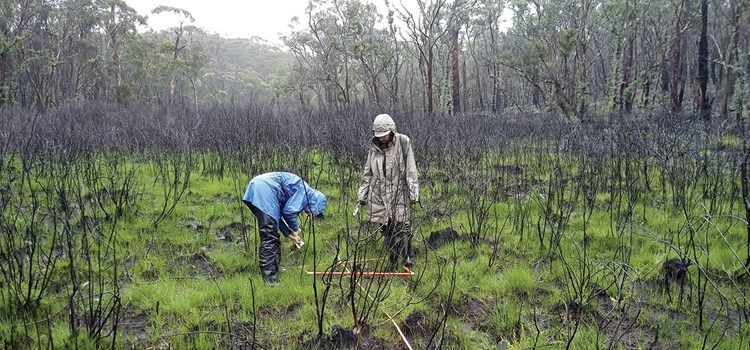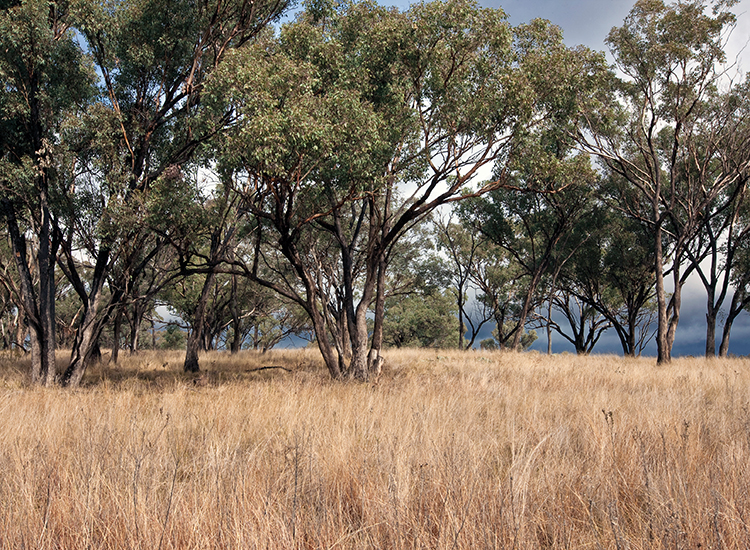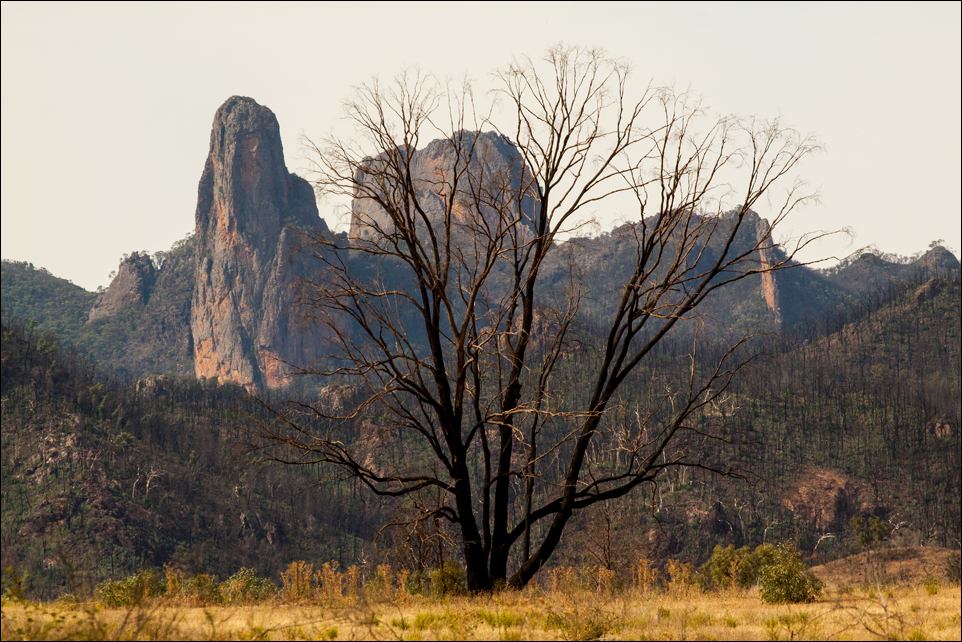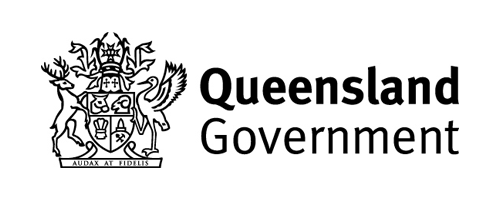
Project: 8.4.2
Fire-related risks to, and conservation strategies for, ecological communities
Project Leaders: David Keith
Research in Brief
This project will review and synthesise available data to assess risks to priority rainforest and peatland ecosystems affected by the 2019-20 bushfires in eastern Australia.
These assessments will provide the essential information base to update and align existing listings of ecological communities under Commonwealth, state and territory legislation. They will also provide the information necessary to process new nominations of at-risk fire-affected ecological communities that are currently not listed. In addition, the project will produce condensed conservation strategies that can be integrated into statutory documents and operation plans for bushfire recovery responses.
Why is the research needed?
The 2019–20 bushfires in southern Australia are the most extensive, and among the more severe, in recorded history. The effects on Australian ecosystems are farreaching in their implications for unique biodiversity, cultural values and essential ecosystem services to rural and urban communities.
Australia is one of relatively few nations that has legislative provisions for ecosystem protection and management through the listing of Threatened Ecological Communities (TECs). While some 100 TECs are currently listed under the EPBC Act 1999, the 2019–20 bushfires have highlighted a need to update listings and fill assessment gaps as a basis for implementing well informed ecosystem management strategies to protect biodiversity and cultural values and sustain ecosystem services for future generations of Australians.
This project focuses on rainforest and peatland ecosystems, highly valued and unique ecosystem types, with values recognised in World Heritage Areas and the National Estate. Both have special vulnerabilities to bushfires. Moreover, their persistence and continuing functionality on the Australian continent appears to be increasingly marginal as changes to climate and fire regimes unfold.
How will the research help?
The aims of this project are to:
- diagnose the drivers and mechanisms of ecosystem decline;
- assess risks to target ecosystems using methods aligned with current and agreed future listing protocols (Intergovernmental Agreement on Common Assessment Method); and
- produce condensed conservation strategies to reduce the risks that will form the basis for revisions to recovery plans, threat abatement plans, conservation advice and other strategic planning documents.
The rainforest and peatland TECs that the project will address include priority Ecological Communities listed as threatened under Commonwealth and state legislation, as well as some that have not previously been assessed.
What research activities are being undertaken?
Preliminary work has already identified initial candidate ecological communities for assessment. To refine and finalise the list of candidates, we will complete a review of state classifications of ecological communities and verify or establish clear relationships between EPBC-listed TECs, and respective state map units (Regional Ecosystems in Queensland, Plant Community Types in New South Wales, Ecological Vegetation Classes in Victoria). We will extend this to related rainforest and peatland communities identified in the state data that have not previously been assessed for EPBC listing. In this preliminary work, we engaged with state agencies in Queensland, NSW, and Victoria, as well as DAWE and the Bushfire Recovery Expert Panel. We will continue to engage with these and other stakeholders throughout the project.
To address Aim (1), we will synthesise scientific understanding from peerreviewed literature, technical reports, data sets and expert consultation to produce conceptual models that represent the key drivers and mechanisms of decline. These will focus particularly on how fire regimes and their interactions with other processes influence the persistence and functionality of communities. We will also integrate this step closely with work underway by the Threatened Species Scientific Committee to define inappropriate fire regimes as a Key Threatening Process.
To address Aim (2), we will assemble data sets to assess risks to each community. We will first update and complete detailed assessments based on criteria developed for the Wildlife and Threatened Species Bushfire Recovery Expert Panel to assess the responses of ECs to 10 fire-related threats. We will use the outcomes of this analysis to interpret and assess risks consistently with existing TEC listing criteria in the EPBC Act.
To address Aim (3), we will prepare condensed conservation strategies for the rainforest and peatland ecosystems assessed as most at-risk. The strategies will reduce identified risks specific to the ECs, focusing particularly on managing fire regimes into an uncertain future. We will review all existing conservation actions implemented to date for each priority EC. We will use approved recovery plans as a template to structure the condensed conservation strategies, to ensure that they will integrate directly into statutory documents (recovery plans, conservation advice) and agency operational plans (e.g., NSW Saving Our Species program plans).
As ECs are assemblages of species, data on all plants, vertebrate and invertebrate fauna, fungi, and so on will be integrated into work on each of the three project components.
Who is involved?
The research will be led by University of New South Wales researchers in collaboration with staff of the New South Wales Department of Planning, Infrastructure and the Environment. We will collaborate with agency staff and researchers in south-east Queensland and eastern Victoria.
Where is the research happening?
This project consists of desktop research, which will be conducted at the University of New South Wales, Sydney.
When is the research happening?
The project will run from January 2020 to June 2021.
More Information
For more information please contact:
David Keith david.keith@unsw.edu.au
Top image: Monitoring early post-fire regeneration in Sunnyside Swamp, Newnes Plateau. These peatland ecosystems make important contributions to landscape hydrological functions and stream flow, as well as providing unique habitats for biota not found elsewhere in the landscape. Image: David Keith







